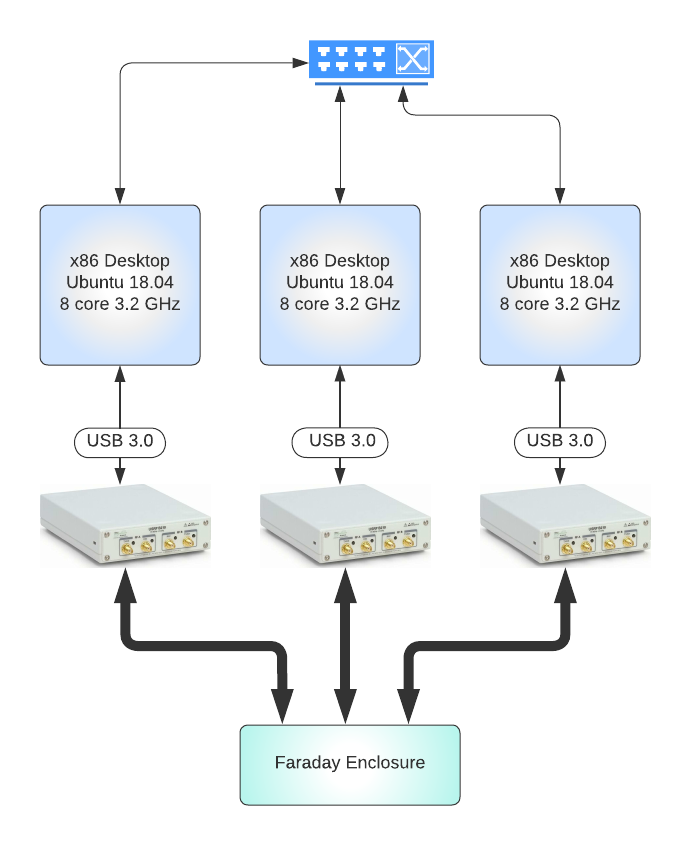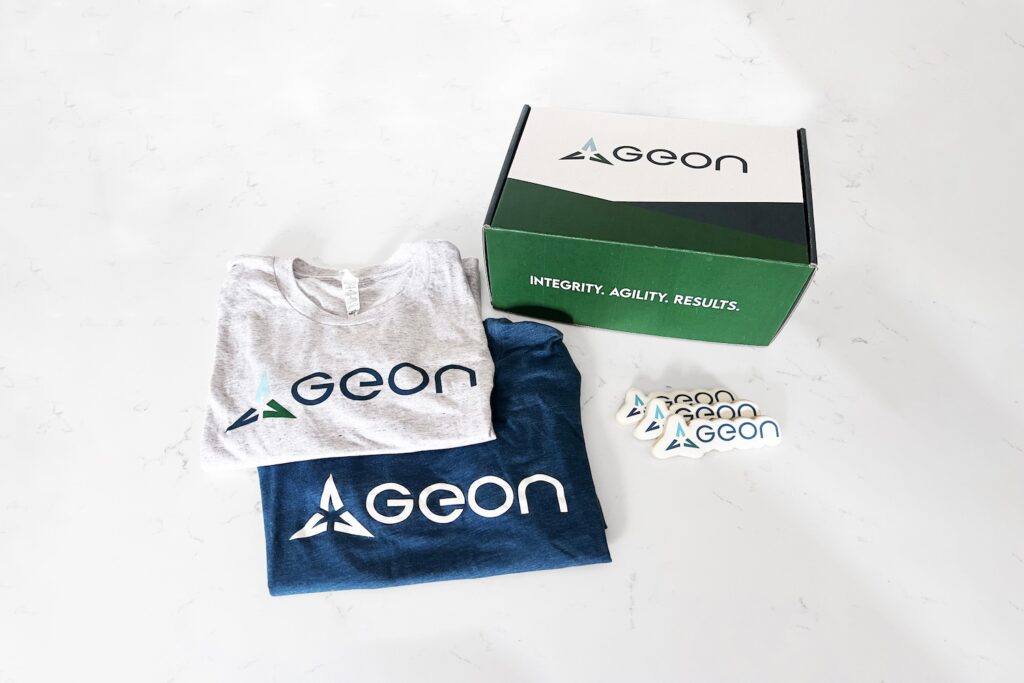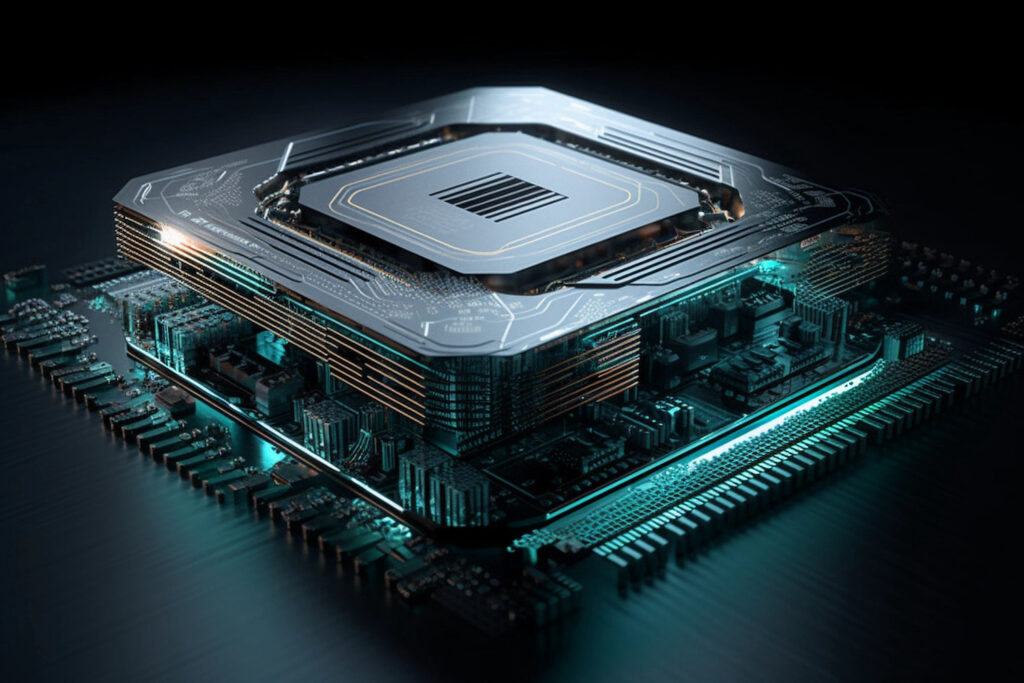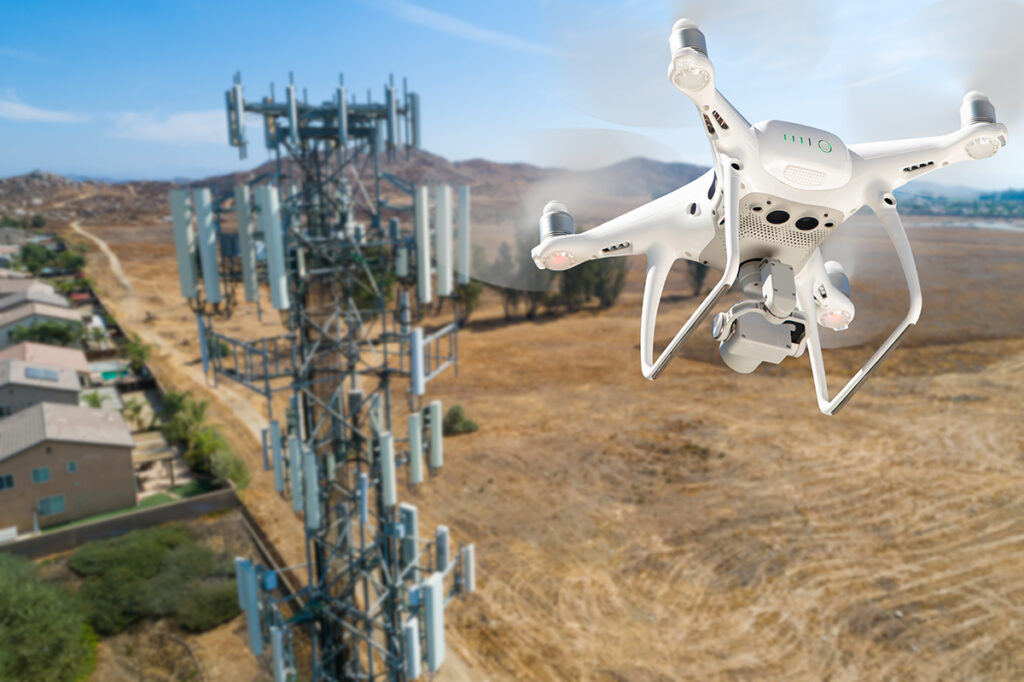Recently in our blog we talked about how we leveraged Open Air Interfaces(OAI) and USRP SDRs to stand up a low cost 5G network for experimentation. Next, we wanted to detail what it would take for anybody else to implement the same in their own lab. Geon recently published the supporting configuration updates to the OAI helm charts and docker images to gitlab making it easier for anybody to recreate our results with the right (low cost) hardware setup.
Hardware Bill of Materials
Apart from publishing the software updates that were made we also wanted to detail the hardware that we used in our lab to obtain the results we detailed in our previous blog post. Geon has developed a lab hardware setup for the research and testing of 5G, the configuration of the lab is a Kubernetes cluster that has two network connected compute nodes. Each compute node has an USB 3.0 connected USRP SDR to use as a resource. The TX and RX interfaces of each of the SDR’s are connected to a RF testing enclosure to ensure any testing that is preformed meets FCC regulations.
Up to this point Geon has been testing the 5G network in Standalone Mode but this architecture can be extended to also support Non-Standalone(NSA) mode as well by adding a compute node and an SDR. The software to support NSA mode is available through OAI but Geon hasn’t tested it in our lab yet, so we cannot evaluate OAI in this mode. The hardware that is required to recreate this lab setup is detailed in the following section.
SA mode only
- B210 x2: SDR Radio Heads
- Dell Desktop x2: Ubuntu 18.04 OS with 8 core 3.2GHz CPU, USB 3.0 interface
- Google Pixel: COTS UE
- Open Cells SIM card and SIM card reader/writer: recommended SIM card hardware setup by OAI
- Faraday Enclosure: RF testing enclosure with 6 sma and 2 USB interfaces
- Antenna x4: n78 band compatible antennas
NSA and SA modes
- B210: additional SDR for eNB processing
- Dell Desktop: additional compute node
- Antenna x2: additional n78 band compatible antennas
Expanding on OAI
With what OAI provides “out of the box”, you can do some really cool things, but it takes a bit of work to get yourself setup with a proper testing lab. With the updates that we have provided we remove some of that required legwork and automated it with our installation scripts which install both kubernetes and the required plugins. Geon also updated the Helm charts that OAI provided to allow for operation with USRP’s rather than only in simulation. Finally, the configuration updates that were made to the Helm charts allow for easy operation with a pixel UE.







